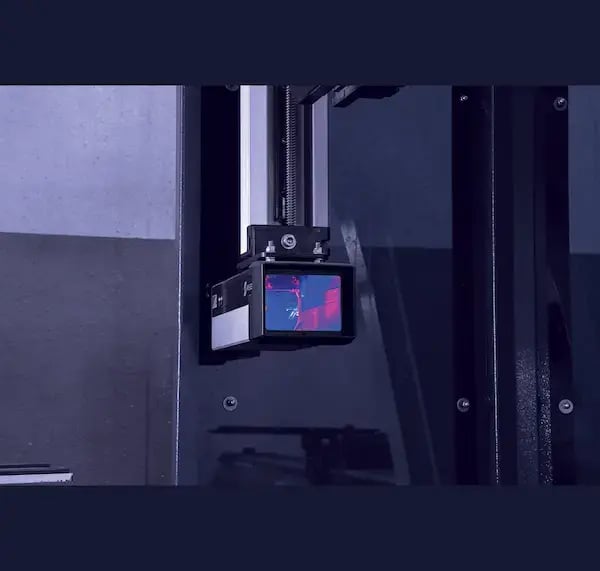In an industry where precision and speed are paramount, angle control has become an indispensable ally for press brakes, meeting the growing need for companies to produce the right part on the first try. If you don't want to read the full article, scroll down and watch the video.
How does it work?
The system measures the bending angle in real-time using optical or laser sensors. It compares the measured value to the programmed value and, if necessary, makes automatic corrections to the bending process. This ensures precise and repeatable angles, eliminating the need for manual measurements and subsequent corrections. Many companies hesitate to invest in angle control due to the initial cost and fear of slowing down the bending cycle. However, they often underestimate the hidden costs associated with a lack of precision: time wasted on manual measurements, material scrap, and continuous adjustments. If we were to analyze a typical 8-hour work shift, we would notice that half of the time is often dedicated to these manual operations, to the detriment of actual production. An angle control system, on the other hand, drastically reduces this waste, ensuring more efficient and high-quality production. In the long run, therefore, an angle control system is an investment that pays for itself. For this reason, many companies are investing in this type of solution to increase their productivity.
Benefits of Angle Control
-
Increased productivity: By reducing inspection times and eliminating manual corrections, angle control significantly increases productivity.
-
Improved quality: By ensuring precise and consistent bend angles, higher quality parts are produced, reducing the number of rejects.
-
Flexibility: Thanks to the ability to work with different materials and thicknesses, angle control adapts to a wide range of applications.
-
Versatility: VICLA has developed an angle control system that allows for two main operating modes, utilizing a material database or operating in "free" mode.
Different Types of Angle Control
VICLA offers two angle control solutions, including one integrated into photocells, such as the Iris Plus. This option is particularly suitable for small press brakes, usually up to about 2 meters in length. It works through an image acquisition system: a camera integrated into the photocell takes a series of frames of the profile during bending, correcting in real-time to achieve the desired angle. This solution is ideal for small-scale production. The choice of Iris Plus is advantageous for its ease of use: being integrated into the photocells, it does not require additional installation.
Moreover, thanks to its compact size, it does not take up valuable space inside the machine. However, it is important to note that this solution has some limitations. On large machines, it may be difficult to obtain an accurate measurement due to the length of the parts. Additionally, for parts with complex bends, such as multiple or overlapping bends, a different solution is required.
 A Cutting-edge System for Maximum Quality
A Cutting-edge System for Maximum Quality
The second solution offered by VICLA is V-Control, a state-of-the-art angle control system that uses two laser sensors to precisely measure the bending angle during the process. Thanks to its ability to dynamically measure the angle, calculate material springback, and make the necessary corrections in real-time, V-Control guarantees the highest quality results.
 V-Control can be used with various methodologies
V-Control can be used with various methodologies
-
Method with preset springback: Used with the values in the database, it is the fastest method that allows real-time control and correction at multiple points on the sheet metal.
-
Method with strain gauges: Perfect for long and thick parts. Through special strain gauges mounted on the shoulders of the machine, it takes measurements at multiple points, detecting deflection and consequently the resulting angle, and automatically correcting it.
-
Real-time measurement method: The most versatile method, which involves measuring at a single point, ideal for short profiles. It allows for real-time angle correction. It is recommended when there is no information in the database (of material and tools), measuring the springback with absolute precision. The great advantage is that it allows companies to build and configure a database with real data.
It is important to highlight that all the described methods allow the system to learn the correct angle and automatically apply it to subsequent bends.
V-Control: Versatile and Precise
 The VICLA angle control system stands out for its versatility and precision. Thanks to the ability to work with or without a database of data, it offers maximum flexibility to the operator. When working with new materials or tools, real-time angle control becomes essential.
The VICLA angle control system stands out for its versatility and precision. Thanks to the ability to work with or without a database of data, it offers maximum flexibility to the operator. When working with new materials or tools, real-time angle control becomes essential.
This process, although slightly longer, allows you to precisely determine the material's behavior and compensate for springback. In practice, a pre-bend is performed at an angle slightly higher than the desired one (usually 5°), the elastic deformation is measured, and the final correction is made. This approach guarantees maximum precision even in non-optimal conditions.
The VICLA solution stands out from the competition for its flexibility. While other manufacturers impose the use of specific tools and databases, VICLA offers the customer the freedom to work with any type of tool, even worn or special. This means that it is possible to obtain optimal results even in situations where pre-set data is not available.
Conclusion
VICLA's angle control is a tool that supports and improves the work of operators, regardless of their experience level. Thanks to real-time measurement and automatic correction, V-Control delivers perfect parts from the first bend, reduces scrap, and increases productivity, improving the company's competitiveness.
